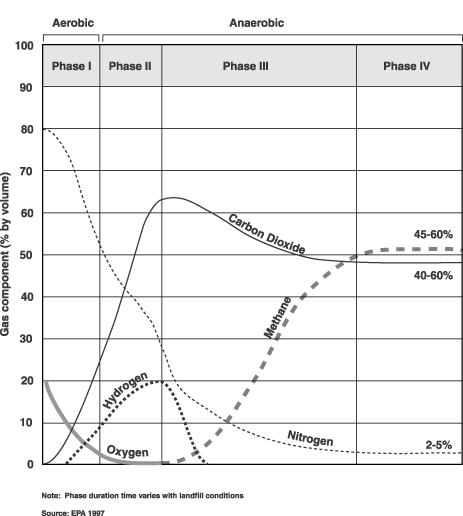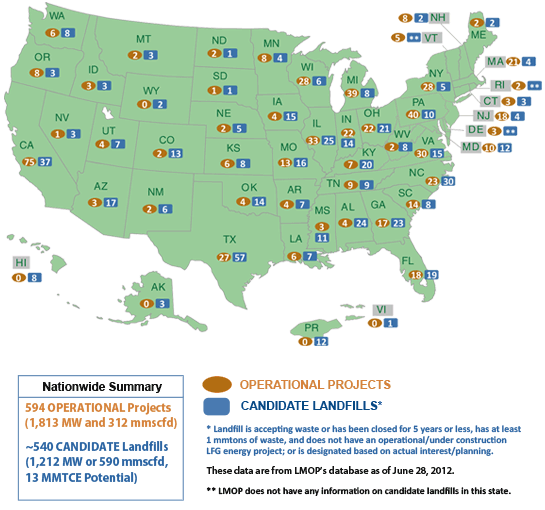
Federal Requirements Under Subtitle D of Resource Conservation and Recovery Act (RCRA) for Landfill Gas Migration Control
Since October 1979, federal regulations promulgated under Subtitle D of RCRA— which regulates the siting, design, construction, operation, monitoring, and closure of MSW landfills—have required controls on migration of methane in landfill gas. These regulations do not address other components of landfill gas. In 1991, EPA issued standards for landfill design and performance that apply to MSW landfills active on or after October 9, 1993. The standards require methane monitoring and establish performance standards for methane migration control. Monitoring requirements must be met at landfills not only during their operation, but also for a period of 30 years after closure.
Landfills affected by RCRA Subtitle D are required to control gas by establishing a program to periodically check for methane emissions and prevent off-site migration. Landfill owners and operators must ensure that the concentration of methane gas does not exceed:
25% of the EL for methane in the facilities’ structures (1.25% by volume)
The LEL for methane at the facility boundary (5% by volume)
Permitted limits on methane levels reflect the fact that methane is explosive within the range of 5% to 15% concentration in air. If methane emissions exceed the permitted limits, corrective action (i. e., installation of a landfill gas collection system) must be taken. The Subtitle D RCRA regulations for MSW landfills can be found in 40 CFR Part 258, which can be viewed through EPA’s Office of Solid Waste Web page at
Federal Requirements Under the Clean Air Act (CAA) Regulations (NSPS/EG)
Under NSPS/EG of the CAA, EPA requires affected landfills to collect and control landfill gas. The NSPS/EG target reductions in the emissions of landfill gas due to odor, possible health effects, and safety concerns. The rules use NMOCs (which contribute to local smog formation) as a surrogate for total landfill gas to determine if control is required. Landfills meeting certain design capacity and emissions criteria are required to collect landfill gas and either flare it or use it for energy. Landfills that meet both of the following criteria must collect and control landfill gas emissions.
Capacity: design capacity greater than or equal to 2.5 Mg and 2.5 million cubic meters.
Emissions: annual NMOC emission rate greater than or equal to 50 Mg.
The basic requirements are the same for both existing and new landfills. Existing landfills are defined as landfills that received waste after November 8, 1987, and began construction before May 30, 1991. These are regulated through the EG. New landfills are defined as landfills that began construction, reconstruction, or modification on or after May 30, 1991. These are subject to the NSPS. The CAA regulations (NSPS/EG) for MSW landfills can be found in 40 CFR Part 60, Subparts Cc and WWW, available on the Internet at http://www.access.gpo.gov/nara/cfr/waisidx_00/40cfr60_00.html. State plans and a federal plan to implement the EG for existing landfills can be found in 40 CFR Part 62.You can also view all Federal Register notices and summary information at http://www.epa.gov/ttn/atw/landfill/landflpg.html.
You can view more information at http://www.atsdr.cdc.gov/HAC/landfill/html/ch5.html



